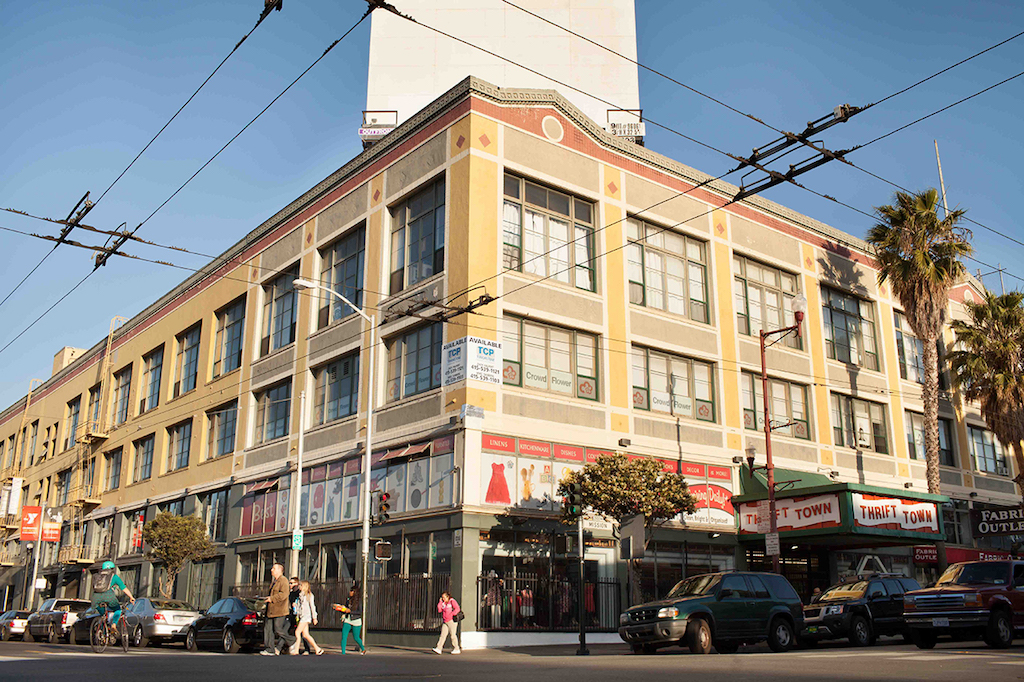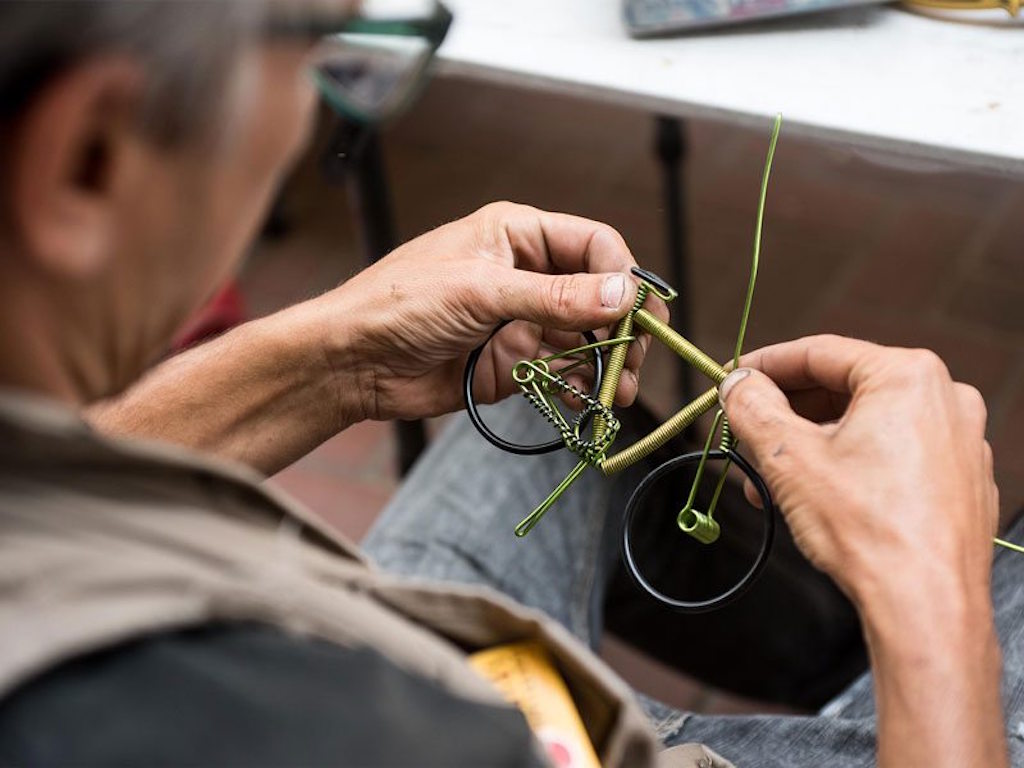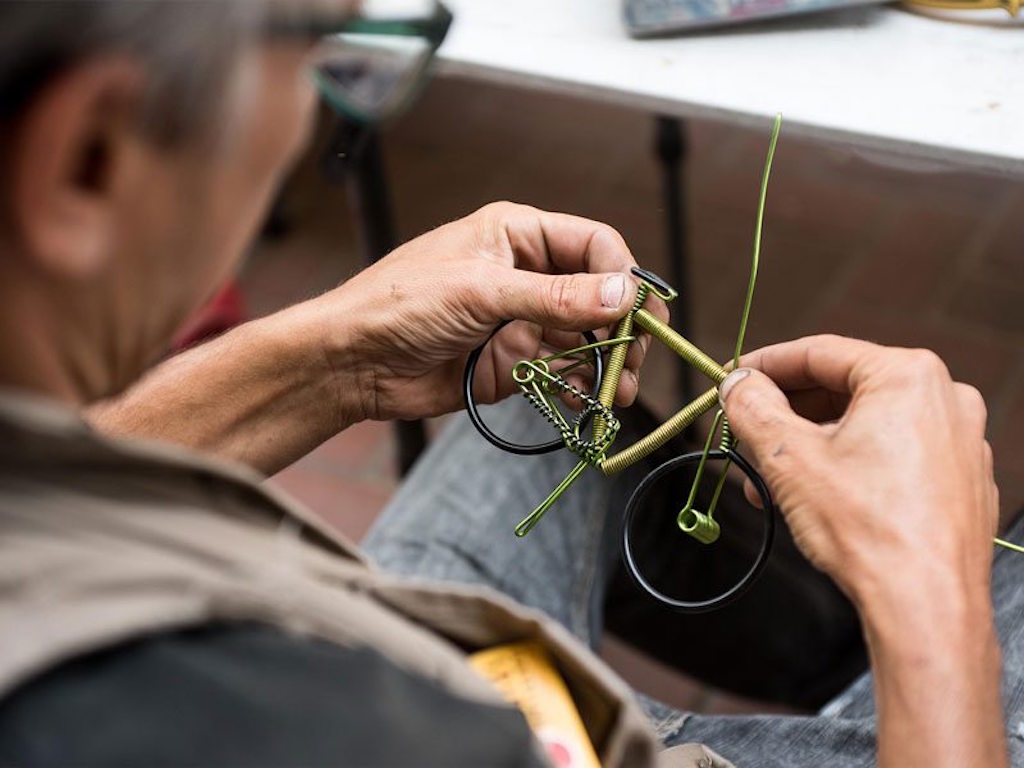The Ghost Ship Fire in Oakland tragically showed the insecurities and dangers faced by people seeking affordable space to live, create art, and share art. It focused attention on what San Francisco and other Bay Area cities can do to keep artists, artisans, and makers in the city, and create and sustain affordable living, studio, and exhibition spaces.
Artists and art spaces, along with nonprofits and industrial uses, face increasing competition for space in San Francisco and neighboring cities. Offices and market-rate housing can pay more for that same space, crowding out arts, makers, and other uses.
Our region needs offices and housing, but we need arts too. Arts and artists improve urban life for the rest of us; it’s hard to imagine a city without art, and it certainly wouldn’t be a livable one. Artists and artisans and their spaces are essential to a diverse and robust local economy, and support other big sectors of the economy like tourism. Smart land use planning and other policies can create and sustain places for artists and art spaces in our city even as we address other housing and jobs needs.
San Francisco does a good job funding arts programs and organizations. The Arts Element of our General Plan includes strong set of policies on arts and artists. However implementing these policies, especially regarding land use, housing, and City investment in preserving and expanding arts spaces, needs to improve.

The Live-Work Experiment
In the 1950s and 60s, San Francisco established a Planning Code that regulated land use. The code aimed to segregate land uses – residential, commercial (offices and shops), and industrial – from one another, and to ban most commercial or production activities from residential zoning districts, and from dwellings in all districts. It imposed minimum parking requirements on all new uses, and strict density and other requirements on housing.
San Francisco’s zoning requirements proved a bad fit with the way artists use buildings. In 1971, Project Artaud managed to use the City’s group housing definition to convert an existing building into a complex that includes artist’s studios and performance and exhibition spaces. In 1988, the city enacted the live-work ordinance. It was intended to ease the reuse of existing buildings as living and working spaces for artists and artisans and construct new buildings to house artists. Live-work units were defined as a use, a hybrid of residential and non-residential uses but distinct from either. “Arts activities” were defined as a non-residential use, and permitted in certain areas of the city. Live-work units were permitted greater flexibility on density, parking, lot coverage, and private open space, and were exempt from certain development fees.
The live-work ordinance created new housing for artists and artisans. But developers also took advantage of the new flexibility to create loft housing in various neighborhoods of the city, including industrial neighborhoods. Many of the new residents weren’t artists, and the new loft buildings displaced and created conflicts with established industrial and entertainment uses in various neighborhoods.
The Board of Supervisors ended live-work in 2001. Existing live-work units could remain, but no new live-work units could be built.
One big lesson of the live-work experiment was how the City’s many arbitrary limits on housing, like parking requirements and density caps, perpetuate the City’s chronic housing shortage. Various neighborhood plans adopted in the last decade have relaxed these limits in some areas, but much remains to be done.
Today, artists wanting to live and work in the same space must use the accessory use provisions of the planning code. The code allows the use of up to one-third of a non-residential space as a residence, provided that the residential portion meets the residential requirements of the building code. Limiting artist spaces to accessory uses poses several challenges. Residents of commercial spaces don’t enjoy the City’s tenant protections – rent control and limitations on no-fault evictions and conversion of residential spaces. The limitations on accessory use don’t provide much flexibility. The requirements of the building code for such hybrid spaces aren’t always clear.
Eastern Neighborhoods
In 2008, the City adopted the Eastern Neighborhoods plans. They were the culmination of about a decade’s worth of planning for industrial uses, and were intended to determine which areas should be preserved for industrial and complementary uses, and which areas opened to more intensive housing and office development.
Eastern Neighborhoods preserved 5% of the City’s land area as PDR (production, distribution, and repair) districts. PDR districts permit a range of industrial and related uses, including arts activities, allowing office and retail to occupy up to a third of building area. Accessory residential use is permitted, but housing is not.
Other portions of Eastern Neighborhoods became mixed-use districts. Mixed Use districts permit housing, office, retail, arts, and some PDR uses, but don’t require a mix of uses in any given building. This has permitted offices to take over entire buildings, displacing other uses and reducing the diversity of uses in mixed-use districts.
Neighborhood Commercial districts, found in commercial corridors within Eastern Neighborhoods and across the city, still don’t permit arts activities.

Moving Forward
We can and should do more to protect artists, artisans, and arts spaces from displacement. San Francisco can help create new places for artists to work and live. Doing so requires coordination across several city departments, including planning, building, housing, and economic development, which is no easy feat. However, we have precedent for success. Over the last three years, Livable City campaigned to legalize accessory units and protect residents of accessory units from displacement, protecting and creating tens of thousands of units citywide.
Here are seven ways we can preserve and expand vibrant arts spaces:
- Protect Residents of Arts Spaces. Artists living in commercial spaces are vulnerable to displacement. The residential accessory provisions provide little security against conversion to other uses, and few tenant protections; generally residents can be evicted within 30 days with no cause. Expanded tenant protections for residents of commercial spaces will help artists remain in San Francisco.
- Expand Code Compliance Assistance. Building and housing codes are necessary to protect life, health, and safety. Planning Codes, done right, can foster livability and preserve diversity. However, since the Ghost Ship fire, code compliance has been used by some building owners a tool to displace residents. We can design vigorous code compliance around the imperatives of preserving housing and preventing displacement. The City can expand technical and financial assistance for code compliance. We should also provide proactive assistance, including useful and up-to date bulletins, guidelines, handbooks, and voluntary screenings. The City should expand use of an existing building code to make health and life-safety improvements in older buildings more feasible.
- Create and Fund a City Arts Strategy. San Francisco has long talked about its love for the arts. It’s time to embrace arts as an essential feature of urban life and a valued sector of the economy. Artists’ housing and arts spaces would benefit from focused and effective inter-departmental strategy to provide financial and technical assistance to create artist housing and sustain arts spaces, including co-operative enterprises for housing, exhibition and performance space, and marketing.
- Permit Arts Activities in Neighborhood Commercial Districts. Today, arts activities are not a permitted use in Neighborhood Commercial districts, but they should be. Arts uses in storefronts and upper-story spaces enhance neighborhood character and complement retail uses in commercial corridors. Commercial corridors with many empty storefronts would benefit from arts-centered economic development strategy.
- Limit Office Sprawl into PDR Districts. Over the past two decades, the City has allowed large office developments to spread out from the downtown core, into the city’s industrial districts and in to areas poorly served by public transit. This has aggravated displacement of arts and PDR uses. It has also worsened traffic congestion and pollution, since transit ridership is sharply lower in offices that aren’t a short walk from transit. The Board of Supervisors has opened up more PDR districts to dense office development. The City needs to end its piecemeal approach to office development, and return to policies that focus office development in areas within a convenient walk of BART and Caltrain.
- Preserve a diversity of uses in Mixed-Use Districts. The City’s Mixed-Use Districts, located primarily in SoMa, permit a broad range of uses, including housing, offices, retail, arts, and some PDR. However they don’t require a mix of uses, and parts of SoMa have been moving towards a monoculture of tech offices. Mixed Use zones should preserve PDR and arts uses from conversion, and reserve ground-floor space for neighborhood-serving retail, arts, and services uses that create walkable commercial corridors.
- Expand arts spaces in Pier 70 and Hunters Point Shipyard. The proposed developments at Pier 70 and Hunters Point Shipyard present big opportunities to create or preserve art spaces. The arts component of both developments should be strengthened, including preserving and rehabilitating buildings currently slated for demolition as arts spaces.
- Preserve and Restore Neighborhood Landmarks as Arts Spaces. We live in a City filled with a rich architectural history. Several City-owned landmark buildings could, if the City and private development reinvests in them, have a new life as community arts spaces, providing space for performances, museums and galleries, arts and vocational education, and arts nonprofits. Some of these spaces include the Geneva Car Barn and Powerhouse, the Old Mint, and the former Muni substation on Fillmore Street. Many San Francisco neighborhoods have fine historic theaters which have closed or are in danger of closing. These theaters can, with City assistance, be sustained or revived as nonprofit arts and performances spaces like Brava Theater, Gray Area’s Grand Theater, and ACT’s Strand Theater. Neighborhood movie theaters and arts venues provide a resource and amenity for residents, strengthen neighborhood identity, attract visitors, and boost local businesses’ bottom lines.
Your support helps Livable City advocate for creative and effective solutions like preserving artist spaces and affordable housing, improve street safety and transit, plan better for growth, equity, and sustainability, and protect and green the City’s public spaces – our streets, parks, and the waterfront. Donate to Livable City today or send us a message letting us know you want to join in keeping arts and artists in San Francisco.




